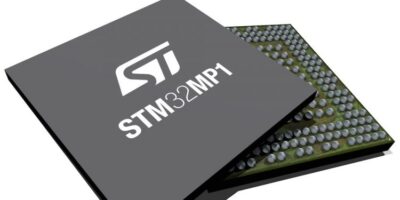 by BBC News
by BBC News
Sector News
Five seater self-flying air taxi unveiled
 by BBC News
by BBC News
Lens array for optical transceivers include mirror
Optical networks for data centres can maximise density in optical transceivers using the FLHL2 series lens array with mirror from Alps Alpine.
IoT technology and artificial intelligence (AI) has increase IP traffic globally. This is expected to be increased further by the introduction of 5G mobile and wireless networks. As a result, optical transceivers used in facilities like data centres will need to be much faster and have higher density, demanding even greater size reductions and high-density mounting of components.
The FLH2 series was developed by Alps Alpine in responses to these trends. The lens array has a 0.75mm lens pitch and integrates condenser lens and mirror components of an optical transceiver receiver. The array measures just 1.3 x 1.3 x 3.5mm. Now, instead of have to position the lenses and mirror separately to convey light to the photodiode, this integrated lens reduces the number of parts and shortens the optical distance to contributing to downsizing the optical transceivers. Having fewer components also reduces the work required for transceiver assembly, leading to lower costs, adds Alps Alpine.
The lead-free glass used is (RoHS-compliant).
Mass production will begin in August this year and Alps Alpine has also announced that it will develop lens arrays with 0.5mm and 0.25mm lens pitches in anticipation of future market requirements for downsizing and multi-channel transceivers as IoT spreads and 5G services are introduced.
Alps Alpine developed one of the world’s smallest glass lenses for submarine cables in 2000.
Alps Alpine was formed on January 1, 2019, when Alps Electric and Alpine Electronics integrated. The company has over 42,000 employees.
Alps Alpine has expertise in core devices, system design and software development and serves the automotive, mobile devices and consumer electronics markets, as well as new sectors such as energy, healthcare and industry.
Rutronik UK supports STM32MP1 processor
System memory for the recently introduced STM32MP1 multi-core microprocessor series includes compute and graphics support combined with power-efficient real-time control. The aim is to aid the development of high-performance solutions for industrial, consumer, smart home, health and wellness applications.
Rutronik UK has combined STM32MP1 technology with approved technology partners Nanya in the form of a 4Gbit DDR3L SDRAM 16-bit and also Toshiba Memory’s 4GByte eMMC. The multi-core microprocessors and the memories, recommended by ST, are available from the distributor.
Engineers can used the STM32MP1 microprocessor series to develop a range of applications using the new heterogeneous architecture that combines up to two Arm Cortex-A7 and a Cortex-M4 core. This flexible architecture performs fast processing and real-time tasks on a single chip, always achieving the greatest power efficiency, reports Rutronik UK. The STM32MP1 embeds a 3D graphics processor unit (GPU) to support human machine interface (HMI) displays.
Rutronik also offers an evaluation board, the STM32MP157C-EV1 and two Discovery kits, the STM32MP157A-DK1 and STM32MP157C-DK2.
A firmware package, STM32CubeMX, is designed for software and hardware configuration of both the Cortex-A7 and Cortex-M4 cores. It handles C-code generation for the M4 core, DDR SDRAM interface configuration, and tuning tool. It can also generate Linux device trees.
Rutronik UK operates as an independent company in the UK. Its parent company, Rutronik Elektronische Bauelemente, is a broadline distributor for semiconductors, passive and electromechanical components in addition to storage technologies, displays and boards and wireless products. The markets that the company primarily targets include automotive, medical, industrial, home appliance, energy and lighting. It also offers support in the areas of product development and design, individual logistics and supply chain management.
About Smart Cities
This news story is brought to you by smartcitieselectronics.com, the specialist site dedicated to delivering information about what’s new in the Smart City Electronics industry, with daily news updates, new products and industry news. To stay up-to-date, register to receive our weekly newsletters and keep yourself informed on the latest technology news and new products from around the globe. Simply click this link to register here: Smart Cities Registration





